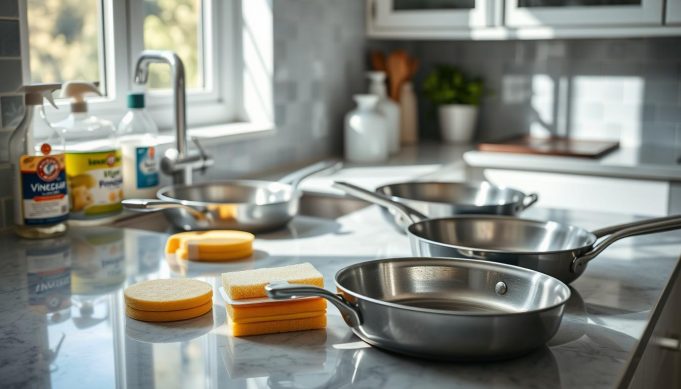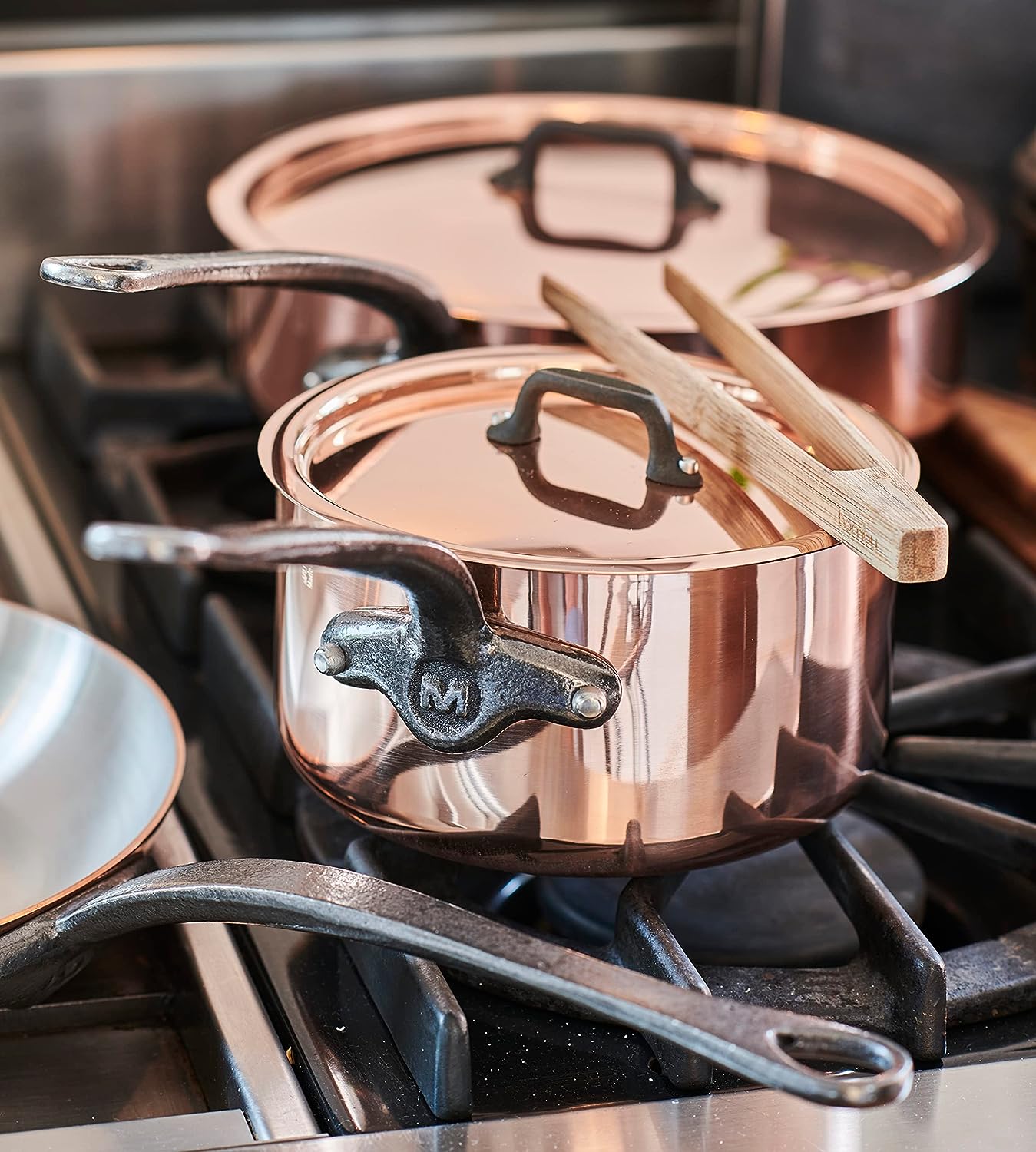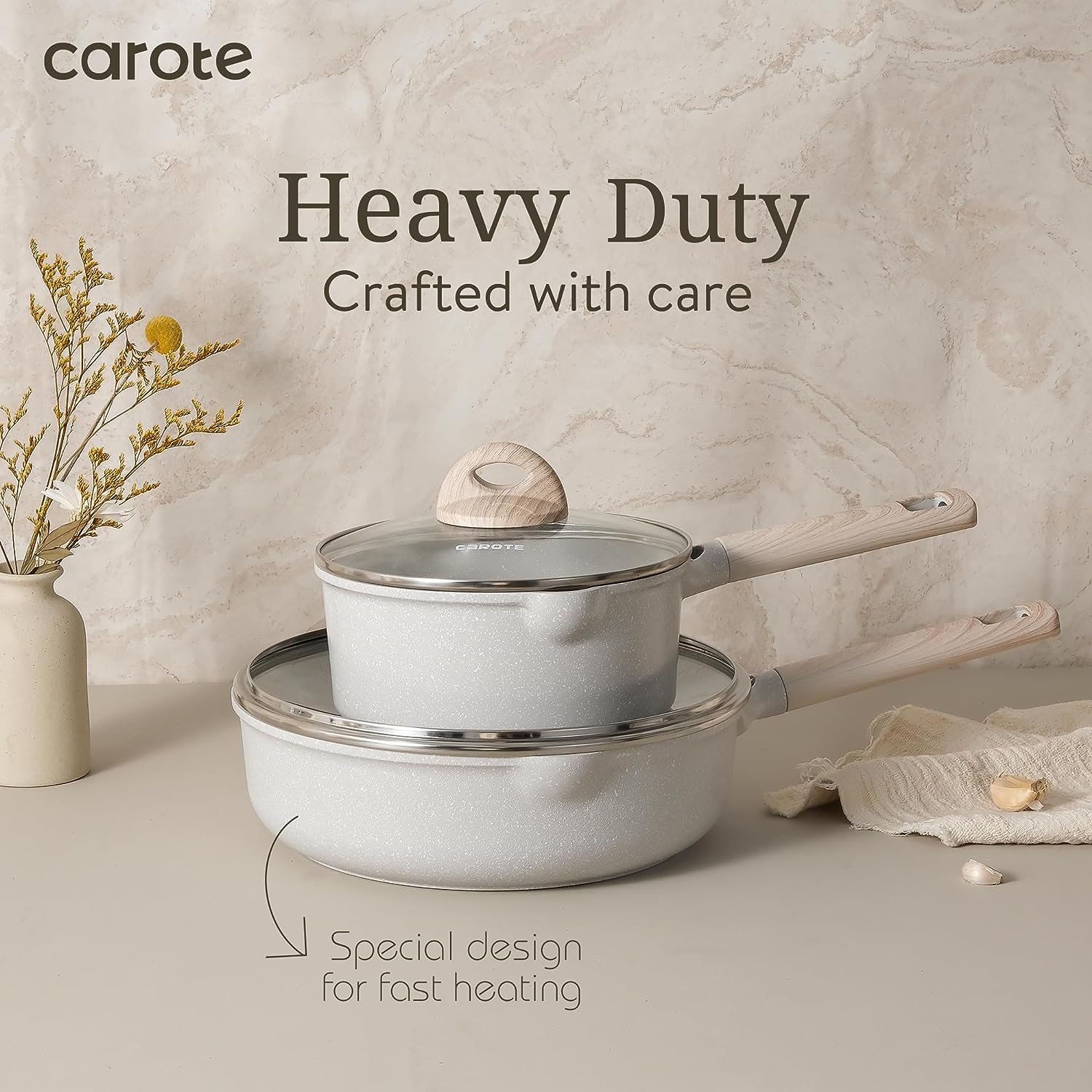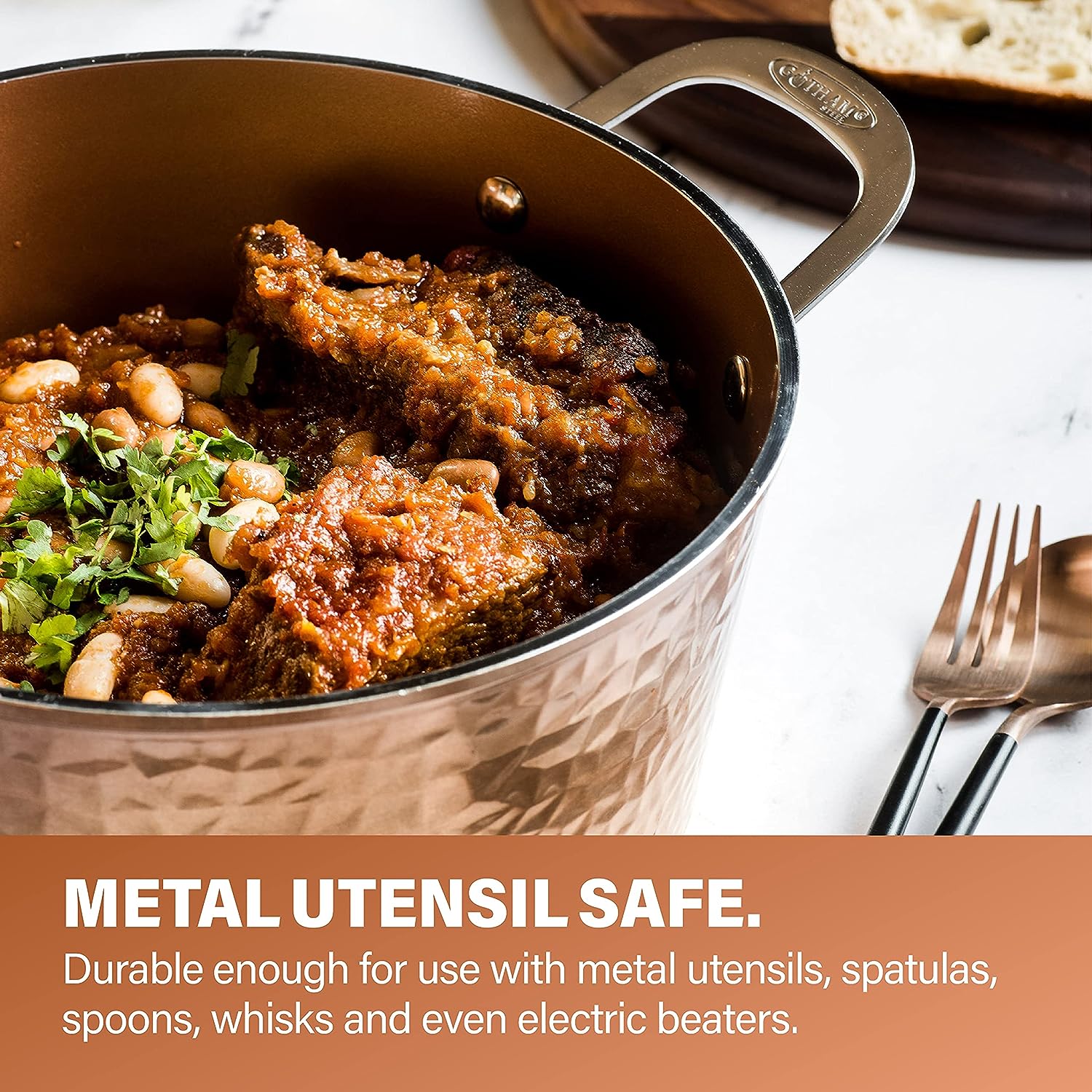Non-stick pans are a must-have in many kitchens. They need special care to keep their non-stick surface in good shape. Most non-stick pans can’t go in the dishwasher, so they must be washed by hand to last longer1. Cleaning them right is key to keeping them in top condition and avoiding damage to the non-stick layer.
Non-stick pans, including frying pans, are delicate and can easily get scratched. So, it’s important to clean them gently and avoid using rough tools2. By taking good care of them, non-stick pans can be a valuable part of your kitchen for many years3.
Key Takeaways
- Non-stick pans require gentle cleaning to maintain their non-stick properties.
- Avoid using abrasive tools and high heat when cleaning non-stick pans1.
- Hand washing is generally recommended for non-stick cookware, including non-stick frying pans2.
- Proper maintenance and storage can extend the life of non-stick cookware3.
- Cleaning non-stick pans after each use can help prevent food residue from hardening and damaging the non-stick surface1.
- Using mild dish soap and a soft cloth or sponge is typically sufficient for cleaning non-stick pans2.
Understanding Non-Stick Cookware
Non-stick cookware is loved by both home cooks and chefs. It needs special care to keep its non-stick surface. It’s made from materials like ceramic or PTFE, which help it not stick to food.
Knowing what your cookware is made of and how to clean it is key. This helps it last longer.
Washing your non-stick pans right after use is important. This stops food from sticking to them4. Use gentle dish soap that cuts grease well4. Don’t use metal utensils, steel wool, or scratchy pads, as they can harm the coating45.
Common Materials Used
Most non-stick cookware is made from aluminum or stainless steel. These materials have special coatings that make cooking easier6. Always use low or medium heat to avoid damaging the surface56.
Why Proper Cleaning is Essential
Cleaning your non-stick cookware right is key to keeping it in good shape. With the right care, non-stick pans can last about five years46. Check your cookware often for any damage like scratches or peeling5.
The Right Tools for the Job
Choosing the right tools is key when cleaning non-stick pans. Tools like soft sponges and non-abrasive cleaners help avoid damaging the non-stick coating7. Soft sponges are gentle and can remove food without scratching the pan.
Non-abrasive cleaners are also vital. They gently remove tough stains without harming the non-stick coating7. Mild dish soap and white vinegar are good examples of these cleaners.
Soft Sponges and Cloths
Soft sponges and cloths are perfect for non-stick pans. They’re gentle and remove food without scratching. Choose ones made for non-stick surfaces and are free of abrasives8.
Non-Abrasive Cleaners
Non-abrasive cleaners are safe for non-stick surfaces. They can tackle tough stains without damaging the coating. Here are some examples:
- Mild dish soap
- White vinegar
- Baking soda and water8
Using the right tools and cleaners keeps your non-stick pans in top shape. Always check the labels and follow the cleaning product instructions7.
| Cleaner | Effectiveness | Gentleness |
|---|---|---|
| Mild dish soap | High | High |
| White vinegar | Medium | High |
| Baking soda and water | Medium | Medium |
Day-to-Day Clean-Up Tips
Keeping your pans clean every day is key to their non-stick performance. Cleaning right after use stops residue and food from building up. This makes cleaning your pans a breeze9. Soaking them in warm water also helps, as it loosens stuck-on food9.
It’s important to avoid using metal utensils to clean your pans. They can scratch the non-stick surface9. Use silicone or wooden spoons instead. Regular cleaning also means you won’t need harsh chemicals or abrasive cleaners, which can harm the non-stick coating9.
Here are some tips for day-to-day cleaning:
- Cleaning the pan immediately after use
- Soaking the pan in warm water to loosen stuck-on food
- Using non-metal utensils to prevent scratching
- Avoiding harsh chemicals or abrasive cleaners
By following these tips, you can keep your pans non-stick and make cleaning easier9.
Deep Cleaning Your Non-Stick Cookware
Deep cleaning your non-stick cookware is key to removing tough stains and residue. This keeps it working well and lasting longer. Non-stick pans should be replaced every five years for best results10. A mix of one part vinegar to two parts water is great for getting rid of sticky stuff10.
It’s important to use safe cleaners to avoid harming the non-stick coating. Avoid aerosol cooking sprays, as they can damage the coating10. Instead, use a soft sponge and mild dish soap for cleaning11.
Here are some tips for deep cleaning your non-stick cookware:
- Use a soft cloth or paper towel to clean, avoiding abrasive materials that can scratch12.
- Don’t use steel wool or abrasive materials, as they can harm the non-stick coating12.
- Preheat the pan before adding oil to keep the surface intact12.
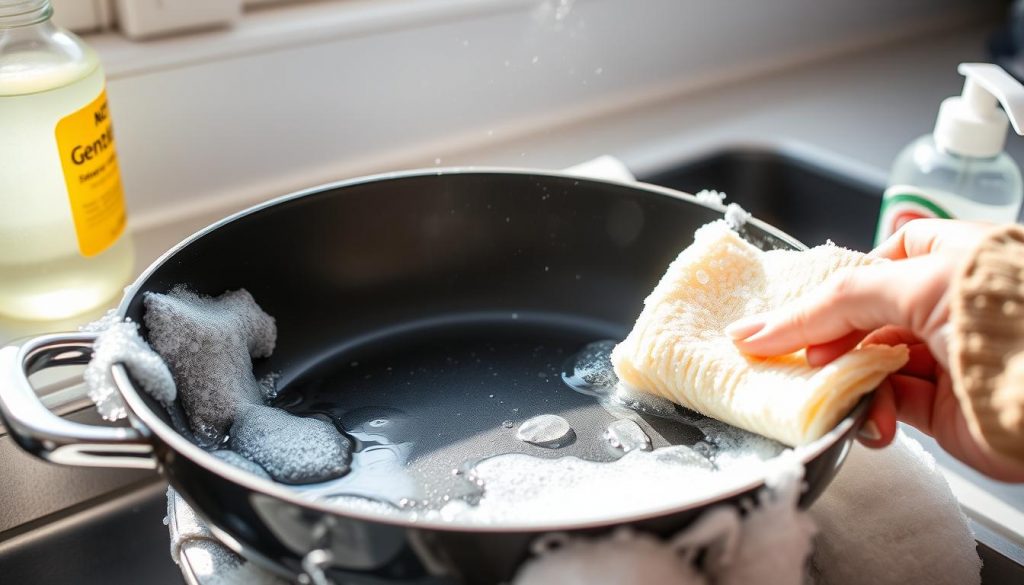
By following these tips and using safe products, you can keep your non-stick cookware in top shape. Always check the manufacturer’s cleaning instructions, as different pans may have special needs11.
| Non-Stick Cookware Material | Cleaning Method |
|---|---|
| Aluminum | Mild dish soap and non-abrasive sponge |
| Stainless Steel | Soft cloth and gentle cleaning products |
Avoiding Common Mistakes
Using non-stick cookware right is key to keeping it in good shape. One big mistake is using metal utensils, which can scratch the surface and damage it13. Another error is cooking at high heat, which can wear down the non-stick layer over time13. Also, improper storage can cause damage, like scratches or warping. To avoid this, store your cookware in a dry place and use protective layers14.
Some common mistakes to steer clear of include:
* Using harsh cleaners or scourers
* Cooking at high heat for too long
* Storing in a humid place
* Using metal utensils or sharp objects
By avoiding these mistakes, you can make your non-stick cookware last longer. For more tips on fixing common cookware problems, check out common cookware issues13.
By following these tips and avoiding common mistakes, you can enjoy your non-stick cookware for a longer time. Always use gentle cleaners, stay away from high heat, and store it properly to prevent damage14.
| Mistake | Consequence |
|---|---|
| Using metal utensils | Scratching the non-stick coating |
| High heat cooking | Deterioration of the non-stick coating |
| Improper storage | Scratching or warping of the cookware |
Tips for Maintaining Non-Stick Quality
To keep your cookware non-stick, you need to season it often and use cooking oils right. Seasoning makes a protective layer on the pan’s surface. This layer stops food from sticking and makes cleaning up a breeze15. Also, using the right amount of oil is key to keep the non-stick surface in good shape16.
To keep your cookware non-stick, do the following:
- Use a small amount of cooking oil to prevent overheating
- Avoid using metal utensils, which can scratch the non-stick surface17
- Clean the pan regularly, using a soft sponge and mild soap16
It’s also important not to overcrowd the pan. This can make food stick together and harm the non-stick coating15. By following these tips and using top-notch non-stick cookware, you’ll enjoy hassle-free cooking and cleaning for a long time. For more tips on caring for your non-stick pan, check out non-stick pan care.
By sticking to these easy tips, you can keep your cookware non-stick. This way, you’ll enjoy easy cooking and cleaning for a long time17.
| Tips for Maintaining Non-Stick Quality | Benefits |
|---|---|
| Regular Seasoning | Creates a protective layer, prevents food from sticking |
| Proper Use of Cooking Oils | Prevents overheating, maintains non-stick quality |
Cleaning Stains and Residue
There are several ways to clean stains and residue from non-stick pans. A baking soda solution is often used to remove tough stains18. Vinegar hacks, like soaking the pan in vinegar and water, can also break down stubborn stains19.
To prevent stains and residue, regular cleaning and maintenance are key. Wash the pan after each use and avoid metal utensils. Also, don’t expose the pan to high heat20. These steps help keep your non-stick pans in top shape.
For effective cleaning, use a gentle dishwashing liquid and a soft sponge. Avoid abrasive materials that can scratch the non-stick coating18. Cleaning the pan while it’s hot can also help loosen food residues19.
Cleaning non-stick pans requires regular maintenance, gentle methods, and the right products. By following these tips, you can keep your pans in great condition. This helps extend their life and keeps them looking new20.
Dishwasher Safety
Many people wonder if it’s safe to wash non-stick pans in the dishwasher. To keep your pans safe, think about the risks of damage to the non-stick coating. Some pans might get damaged in just one wash, depending on how they’re made21. The high water pressure and hot water with detergent can harm the coating, affecting both ceramic and traditional non-stick pans21.
Non-stick pans don’t last as long as stainless steel or cast iron. Washing them by hand can make them last longer, by months or even years21. In a crowded dishwasher, the pans can get scratched or chipped by other items. Just one wash can cause visible damage like peeling or discoloration21. So, hand washing is a safer choice to keep your pans in top shape.
Hand Washing vs. Dishwasher
Choosing between hand washing and a non-stick dishwasher is key to keeping your pans in good condition. Using a dishwasher can shorten the life of non-stick pans, but it’s worse for ceramic coatings22. Hand washing, on the other hand, helps protect the non-stick coating and keeps the pan in great shape. By picking the right cleaning method, you can make your non-stick pans last longer and stay safe in the dishwasher.
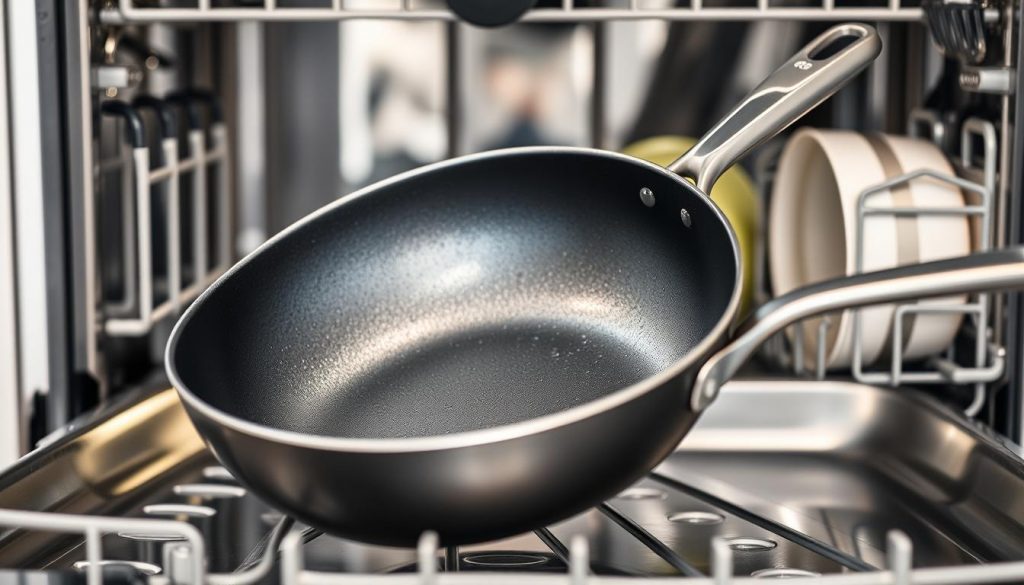
Whether to use a non-stick dishwasher or hand wash depends on your pan’s type and cleaning needs. Weighing the risks and benefits helps you decide. Always follow the manufacturer’s advice for the best way to clean your non-stick pans safely.
Storing Your Non-Stick Pans
Keeping your non-stick pans in a dry place is key to their longevity. This prevents water spots and damage to the non-stick coating23. Using dividers or liners can also protect against scratches and extend your pans’ life2.
It’s best to avoid stacking non-stick pans to prevent scratching and damage24. Instead, use a pan rack or hang them from a hook. This keeps them separate and organized. For more tips on storing and maintaining non-stick pans, check out this resource.
Here are some extra tips for storing non-stick pans:
- Use a soft cloth or paper towel to separate pans when stacking
- Stay away from abrasive materials or metal utensils that can scratch the non-stick surface
- Store pans in a cool, dry place to avoid damage from heat or moisture
By following these tips and using dividers or liners, you can make your non-stick pans last longer23. Always handle them with care and avoid harsh chemicals or abrasive materials that can harm the non-stick coating2.
Troubleshooting Non-Stick Issues
Non-stick pans make cooking and cleaning easier. But, they can face problems. When troubleshooting non-stick issues, finding the cause is key. A common problem is when food sticks to the pan because the non-stick coating fails. This can happen due to wrong use or care25.
Another issue is signs of damage to the non-stick surface. This includes scratches, chips, or color changes. To avoid these, use the right tools and cleaners. Metal utensils and harsh cleaners can harm the coating26.
To keep the non-stick surface in good shape, use soft sponges and cloths. Avoid high heat and metal tools. Regular care and replacing the pan every few years are also important25. Some key tips for troubleshooting non-stick issues include:
- Using the right cooking utensils and products
- Avoiding high heat and abrasive cleaners
- Regular cleaning and maintenance
- Replacing the pan every few years
By following these tips and watching for signs of damage and non-stick coating fails, you can make your non-stick pan last longer26.
Eco-Friendly Cleaning Solutions
Keeping your cookware in top shape is key, and eco-friendly cleaning is a must27. Try making your own cleaners with baking soda, vinegar, and lemon juice. They work wonders on tough stains and leave no harsh chemicals behind28. Choose sustainable brands for non-toxic, plant-based cleaners to clean your pans and help the planet.
Homemade cleaners are a great choice for eco-friendly cleaning. A mix of water and vinegar can boil away tough food bits28. Baking soda is also great for a gentle scrub to remove any leftover mess.
If you prefer easy, green options, look for brands that make eco-friendly products for non-stick pans. These brands use natural ingredients and avoid harmful chemicals. This way, your pans stay clean and your environment stays safe.
Switching to eco-friendly cleaning helps your non-stick pans last longer and makes your home healthier27. With the right cleaning methods, your pans will keep cooking great food for many years.
FAQ
What is non-stick cookware and what materials are commonly used?
Why is proper cleaning essential for non-stick cookware?
What are the best tools for cleaning non-stick pans?
How should I clean my non-stick pans after each use?
When should I do a deep clean on my non-stick pans?
What are the most common mistakes to avoid when cleaning non-stick cookware?
How do I maintain the non-stick quality of my cookware?
How do I clean stubborn stains and residue from my non-stick pans?
Is it safe to put my non-stick pans in the dishwasher?
How should I store my non-stick pans to maintain their condition?
What are the signs of damage to my non-stick cookware, and how can I troubleshoot issues?
What eco-friendly cleaning solutions can I use for my non-stick pans?
Source Links
- How to Clean Non Stick Pots and Pans Properly | Made In – https://madeincookware.com/blogs/how-to-clean-non-stick-pots-and-pans
- How to Clean Nonstick Pans, Plus Tricks That Will Make Them Last Longer – https://www.bhg.com/homekeeping/house-cleaning/tips/tips-for-using-nonstick-pans/
- How to *Not* Ruin Your Nonstick Pan – https://food52.com/blog/25458-how-to-care-for-nonstick-pans?srsltid=AfmBOoo8T6jod2VInWoYj-oyEGhhtat5Y23YLiqVMJg65weRZ-s2FgB6
- How to Properly Clean Your Nonstick Pans So They Last as Long as Possible – https://www.allrecipes.com/how-to-clean-non-stick-pans-7255890
- How to Clean & Care for Nonstick Pans | Sur La Table – Lid & Ladle – https://learn.surlatable.com/clean-and-care-for-nonstick/
- How to Use and Care for Nonstick Cookware – https://www.thespruceeats.com/nonstick-cookware-tips-908918
- How To Clean Non-Stick Pans Properly: Burnt, Baked & More by HexClad Cookware – https://hexclad.co.uk/blogs/posts/how-to-clean-non-stick-pans-properly-burnt-baked-more?srsltid=AfmBOorYHXKZ52tR5UAQB8H5iYMFSa6QN6Sd1MxjsvJESu4U-vUCBa6M
- The Best Ways to Clean Your Cookware – https://www.kitchenkapers.com/pages/best-way-to-clean-your-cookware
- How To Clean a Nonstick Pan – https://www.thekitchn.com/how-to-clean-a-nonstick-pan-259937
- How to Clean Non Stick Pans – https://www.webstaurantstore.com/blog/4118/how-to-clean-non-stick-pans.html?srsltid=AfmBOop9n_Uup7IhG24Ax7J0LlbEb8buYOhE6pEsRs9fJ2tsv2hqL0HQ
- How to Clean Nonstick Pans | Our Place | Always Pan – https://fromourplace.com/blogs/care-use/how-to-clean-nonstick-pans
- How to *Not* Ruin Your Nonstick Pan – https://food52.com/blog/25458-how-to-care-for-nonstick-pans?srsltid=AfmBOopkhEGoe_k8e6_Fm8wV8fEu7HK6ZJTaYjvgWtfLfBrjbkGrJQwi
- 5 Common Mistakes to Avoid When Using Nonstick Cookware – https://www.thekitchn.com/5-common-mistakes-to-avoid-when-using-nonstick-cookware-tips-from-the-kitchn-211177
- How to Clean Nonstick Cookware – https://americankitchen.com/blogs/table-talk/how-to-clean-nonstick-cookware?srsltid=AfmBOorIHUksIWXPB0Lml7Qqds7IZf2prFi–WFEVjZNvDRFY5zMq70F
- How To Clean Non-Stick Pans Properly: Burnt, Baked & More by HexClad Cookware – https://hexclad.co.uk/blogs/posts/how-to-clean-non-stick-pans-properly-burnt-baked-more?srsltid=AfmBOoqMm94G1OsZNHh1qodE8w84k3FbE6hoXyyMGuaguGAEfnCxwbPf
- How to Clean Non Stick Pans – https://www.webstaurantstore.com/blog/4118/how-to-clean-non-stick-pans.html?srsltid=AfmBOoqqOfFrl6qDCd6mqCZOo6u6noOeynDHuz_y55izOOyAEM9BETJl
- Cooking and Care Tips | Teflon™ Nonstick Cookware – https://www.teflon.com/en/consumers/teflon-coatings-cookware-bakeware/recipes-and-tips/browning-deglazing
- How to Clean Non Stick Pans – https://www.webstaurantstore.com/blog/4118/how-to-clean-non-stick-pans.html?srsltid=AfmBOoq0h8nXQ2Blzot_mEzW6bkcO81ld1TsEX-S2-IUuR9zLCRhkGeU
- How to *Not* Ruin Your Nonstick Pan – https://food52.com/blog/25458-how-to-care-for-nonstick-pans?srsltid=AfmBOopQ8a6JrHg3s7bwXp5b7VgT0H4E0BkuUwVzk7dRs8pulM_EtbkA
- How to Clean a Non-Stick Pan Safely – Guide & Tips – House – https://www.house.com.au/blog/how-to-clean-a-non-stick-pan-safely
- Can Non Stick Cookware Go in the Dishwasher? – https://madeincookware.com/blogs/can-non-stick-pans-go-in-the-dishwasher
- Should You Put Nonstick Pans in the Dishwasher? – https://www.bhg.com/should-you-put-nonstick-pans-in-the-dishwasher-7503380
- How to *Not* Ruin Your Nonstick Pan – https://food52.com/blog/25458-how-to-care-for-nonstick-pans?srsltid=AfmBOoqQp1aq67DgK6ETfoMrAwwxCT3c4siF3rZbp39fg-L4frsBrqyB
- How To Clean Non-Stick Pans Properly: Burnt, Baked & More by HexClad Cookware – https://hexclad.com/blogs/posts/how-to-clean-non-stick-pans?srsltid=AfmBOooW9Jg9XwiBOnivVZvAc_4giZCnNnst86404PSvW-QticGQWMZU
- How to Clean Non Stick Pans – https://www.webstaurantstore.com/blog/4118/how-to-clean-non-stick-pans.html?srsltid=AfmBOor_uHvBRPlK1W3g8yn8uTvRHpRuK9aPAebekZYJlSCNNCxeWgQn
- 7 ways you’re ruining your nonstick pans — and how to save them – https://www.today.com/food/7-ways-you-are-ruining-nonstick-pans-how-save-them-t104329
- How To Clean Non-Stick Pans Properly: Burnt, Baked & More by HexClad Cookware – https://hexclad.com/blogs/posts/how-to-clean-non-stick-pans?srsltid=AfmBOoq31vWULMLYGXOIRPQoWDvrXxu0KoMPSbLxamPFCaTl4jrsykg4
- Getting Burnt-On Food Off Non-Stick Pans – https://www.cheftalk.com/threads/getting-burnt-on-food-off-non-stick-pans.111992/


